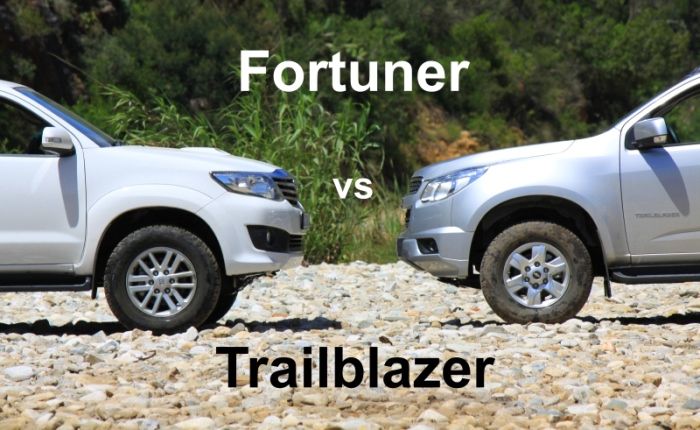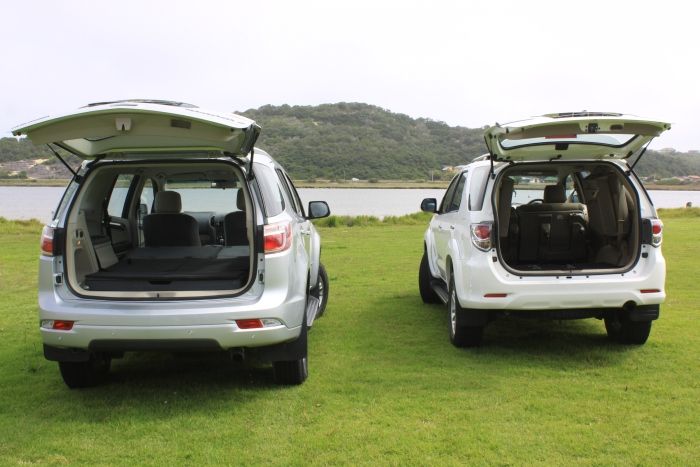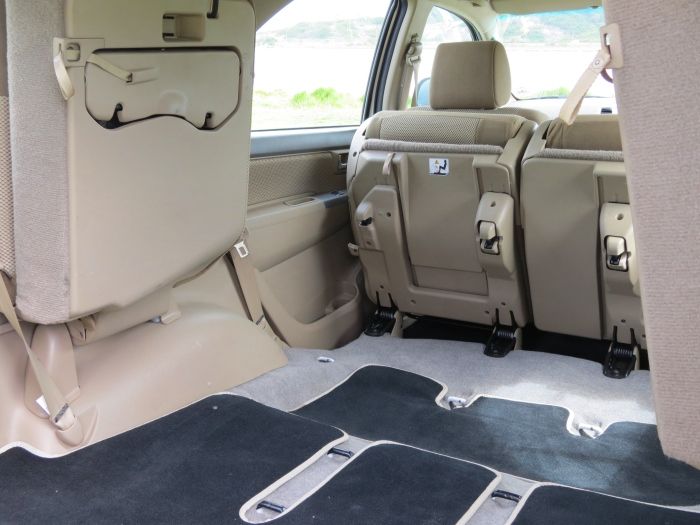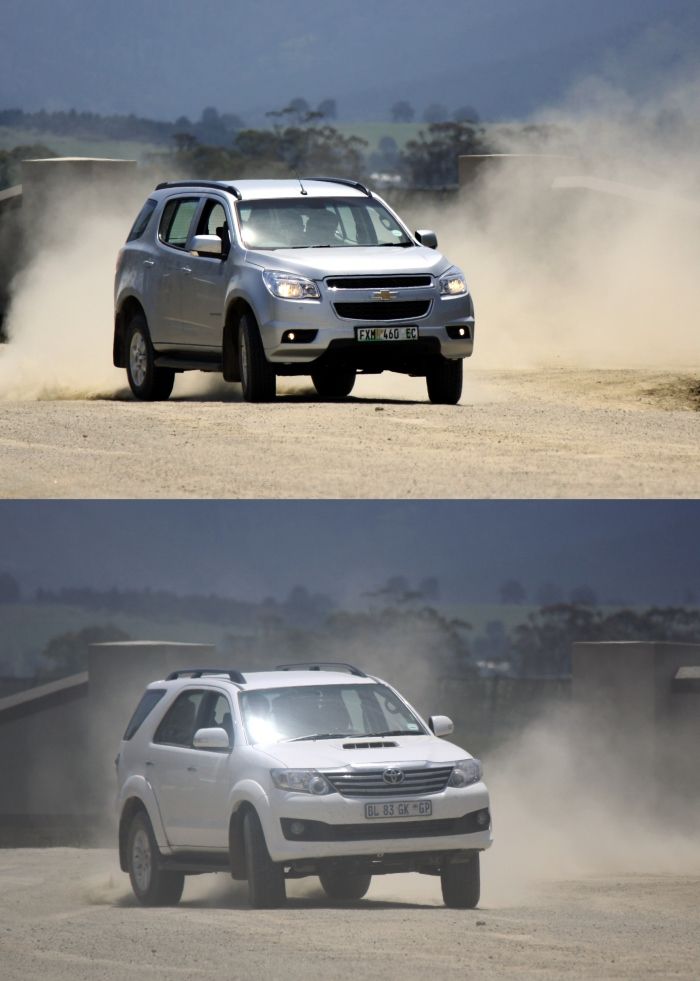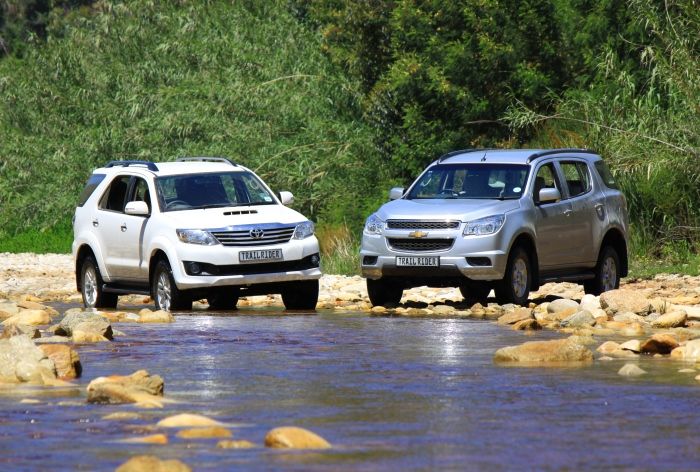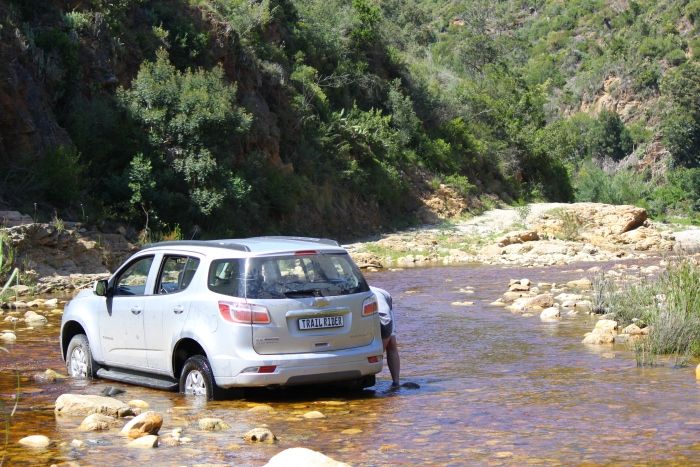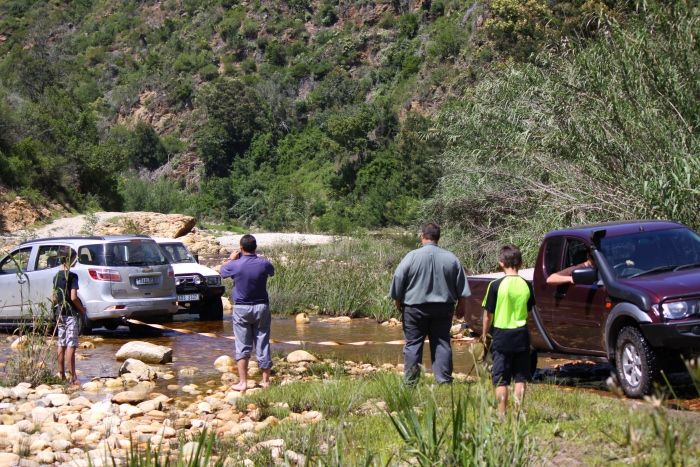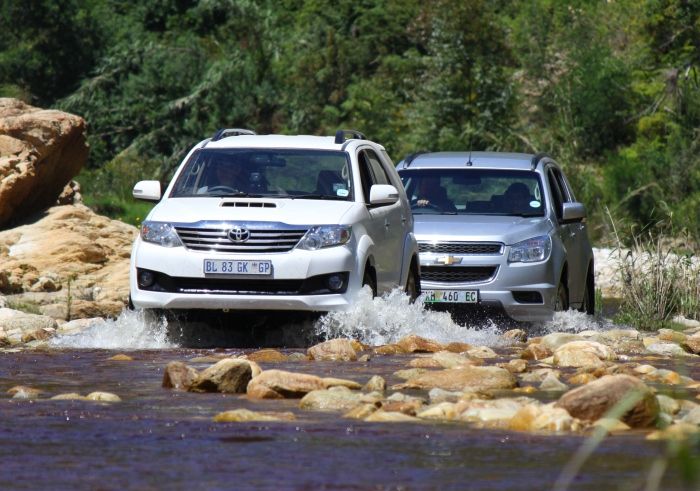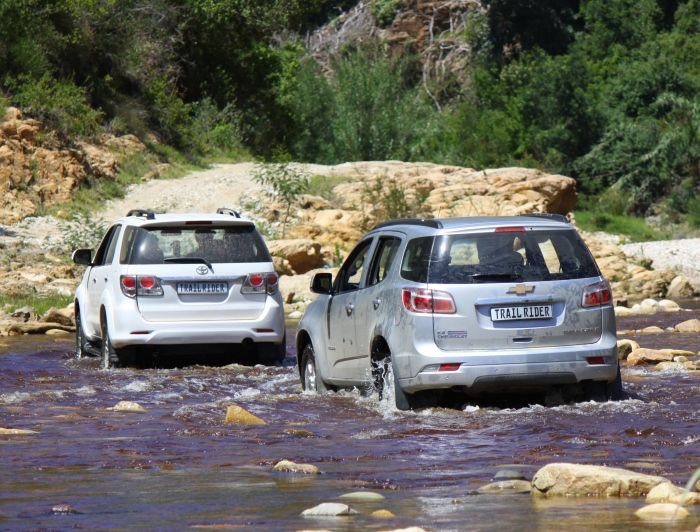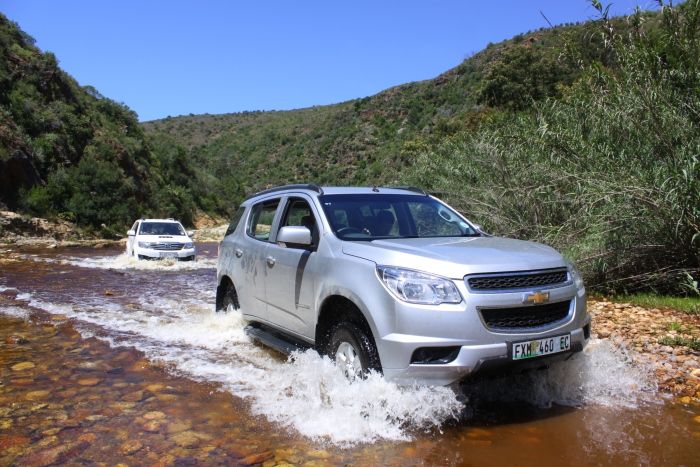When Attaquas pass was first crossed in 1689 it was the only route linking the coastal belt to the Klein Karoo. The likes of Gysmanshoek pass (1740) was still half a century in the future. The mountain ranges was not the only natural barrier isolating the coastal area though. It was often divided into further sections by rivers running into the ocean. One such barrier, perhaps the most fearsome of all, was Kaaimansgat. Getting a wheeled vehicle through Kaaimansgat was close to impossible. This meant that the timber and fish-rich lakes area was not only cut off from George and the harbour in Mossel bay, but also from the Klein Karoo. Another pass was needed.
Duiwelskop Pass could have been a relative “tame” pass considering what some of the other passes are like, but due to the means of travel at the time this pass ran over the summit of on of the peaks of the mountain range. This was because the tall wagons could not handle steep side slopes and would topple over, so straight up the one side and straight down the other was the only way to go. Those were the days of men.
The pass was aptly named Duiwelskop Pass, and this is the next section of our route. We start our journey on the Klein Karoo side on the farm Louvain, where we obtain our permits and keys for this section of our route from a very helpful Nico Bester. The permit cost is included in the route cost of R200 per vehicle and allows entry into the Bergplaas Forestry station area at the end of the trail.
The forestry section has a very definite and strict "No Bikes" policy and therefore I have never been on this pass before. I do not have that problem today though because today my set of wheels is this – an Arctic Amarok!

There's a lot to be said for travelling where you have not been before. First-time experiences, new things to see. I am running out of places like that in the Southern Cape, so I could hardly contain my excitement.
The route is well marked and soon we were on our way.

The maintained roads of the first sections is now a distant memory as the start of this route promisses more of the same conditions we encountered on Attaquas Pass.




No problem for the Arctic Amarok though as it takes it in it's stride.
The first section runs straight up the mountain as can be seen with the erosion on the road. Might be a different kettle of fish traveling up here when it's raining...


As you start to gain some height the scenery and view gets better and better.

Sometimes you dip into an overgrown area...

only to emerge again and be treated to more spectacular views.

And we were not even halfway up yet! Some serious climbing still lay ahead...

As per usual you can not see the true gradient on the photos, and add to that an uneven road and any 4x4 vehicle has it's work cut out. Traction is the name of the game here.


This is a cross-axle situation. Going through it the front wheel lifts and when it comes down the back wheel lifts.

Check the amazing articulation of this Amarok:


When a truck hangs on three wheels the articulation pretty much goes as far as it can and the big wheels never touched the arches.
The Motor Journalist in me desperately wanted a standard Amarok here too to compare. The big wheels and upgraded suspension, coupled with VW's 4Motion system makes for one impressive vehicle.
The view back over the Langkloof from higher up:

And higher still – gaining some real altitude now.

And we're not on top yet!


And finally (but all to soon) we summit – on top of the world.

The view in all directions from here is simply amazing.

Along the mountain range looking East:


The view towards the ocean:


It is thought that local farmers, Jacobus van Beelen and Stephanus Terblanche, opened this route in 1772, but the public only started using this pass in 1776. It was the first pass opened over the Outeniqua mountains from North to South. The fact that people were prepared to travel West from George, over Attaquas Pass, down the Langkloof and over Duiwelskop Pass is a clear indication of what a big obstacle Kaaimansgat was considered to be.
Sir John Barrow, who passed this way in 1797, commented:
From the one end of the Lange kloof there is but one passage for wagons over the South chain of mountains and this is seldom made use of, being considered among the most formidable and difficult roads in the colony. It lies, in fact, over the very summit of one of the points in the chain called the Duivels Kop...
...the road was dreadfully steep and stony, and as it approached the summit, where the width of the ridge was not above fifteen paces, the ascent was from stratum to stratum of rock, like a flight of stairs, of which some stairs were not less than four feet high. Upon these it was necessary to lift the wagons by main strength... The descent of the Duyvil's Kop was much more gradual than the ascent, and the smooth grassy surface of the Northern side was now changed into an extensive shrubbery.
Four foot steps with an ox-wagon.
The road down the Southern side:

This section too has it's moments. I can not imagine how the people of the time negotiated these passes with wagons and oxen that had almost no suspension to speak of and needed wide turning circles.


Some more scenery shots on the way down:



Coming down onto the coastal plain the Flora changes totally from the Karoo fynbos to lush forest and ferns.


The end of the route deposits you right onto the George / Knysna 7 passes road near Hoekwil.
The great road builder Andrew Bain did have a look at this pass in 1857, as did his son Thomas Bain in 1862, but it was never improved. The construction of the 7 passes road between George and Knysna negated the need for this pass and it fell into disuse.
It never was busy route like Attaquas Pass, so there are no ghost towns of years gone by. I am surprised though that there is not even a Block house, as the Boers under Gideon Scheepers did make quite a nuisance of themselves in the Langkloof. It is spectacular to travel though, the scenery alone is breathtaking.
Like Attaquas Pass, this pass can also be found on the Tracks 4 Africa maps. Also have a look at the Louvain Website for more info.

(Coming Soon...)

.
